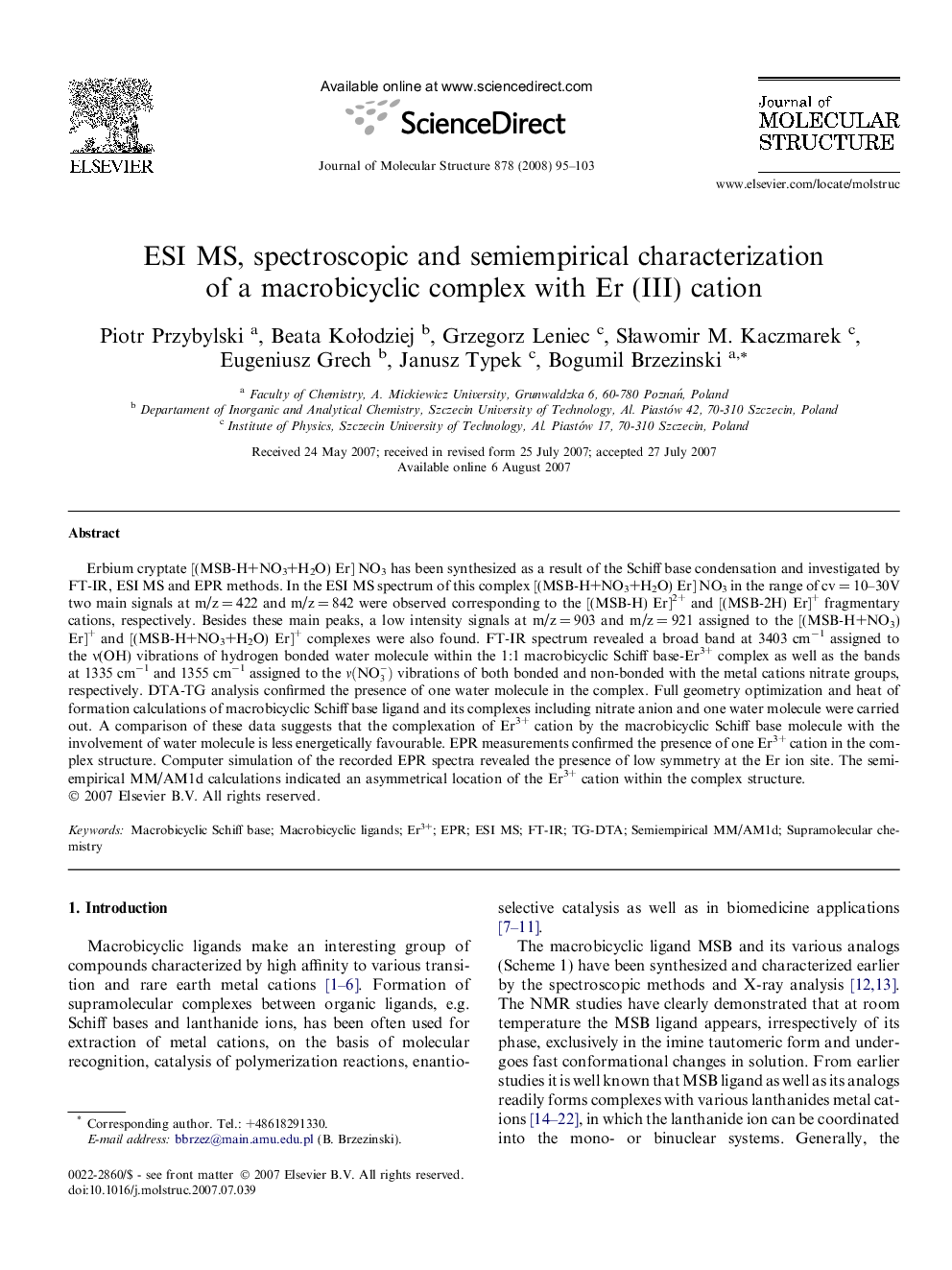| Article ID | Journal | Published Year | Pages | File Type |
|---|---|---|---|---|
| 1407006 | Journal of Molecular Structure | 2008 | 9 Pages |
Erbium cryptate [(MSB-H+NO3+H2O) Er] NO3 has been synthesized as a result of the Schiff base condensation and investigated by FT-IR, ESI MS and EPR methods. In the ESI MS spectrum of this complex [(MSB-H+NO3+H2O) Er] NO3 in the range of cv = 10–30V two main signals at m/z = 422 and m/z = 842 were observed corresponding to the [(MSB-H) Er]2+ and [(MSB-2H) Er]+ fragmentary cations, respectively. Besides these main peaks, a low intensity signals at m/z = 903 and m/z = 921 assigned to the [(MSB-H+NO3) Er]+ and [(MSB-H+NO3+H2O) Er]+ complexes were also found. FT-IR spectrum revealed a broad band at 3403 cm−1 assigned to the ν(OH) vibrations of hydrogen bonded water molecule within the 1:1 macrobicyclic Schiff base-Er3+ complex as well as the bands at 1335 cm−1 and 1355 cm−1 assigned to the ν(NO3-) vibrations of both bonded and non-bonded with the metal cations nitrate groups, respectively. DTA-TG analysis confirmed the presence of one water molecule in the complex. Full geometry optimization and heat of formation calculations of macrobicyclic Schiff base ligand and its complexes including nitrate anion and one water molecule were carried out. A comparison of these data suggests that the complexation of Er3+ cation by the macrobicyclic Schiff base molecule with the involvement of water molecule is less energetically favourable. EPR measurements confirmed the presence of one Er3+ cation in the complex structure. Computer simulation of the recorded EPR spectra revealed the presence of low symmetry at the Er ion site. The semiempirical MM/AM1d calculations indicated an asymmetrical location of the Er3+ cation within the complex structure.
